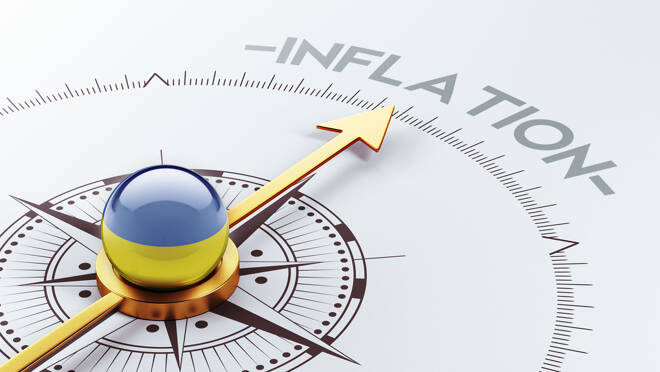Advertisement
Advertisement
Cost-Push and Demand-Pull Inflation: Definitions and Examples
By:
Although price inflation can result in financial pain for consumers and investors, it can also be a sign of a healthy economy when inflation, or steadily higher prices, is under control.
In this article:
Economists tell us that controlled inflation is a sign of economic growth. Central banks, such as the U.S. Federal Reserve, actually set monetary policy to maintain a consistent inflation rate of around two percent per year.
The gradually rising prices associated with inflation can be caused in two main ways: cost-push inflation and demand-pull inflation.
Both are associated with the principles of supply and demand.
What is Cost-Push Inflation?
Economists describe cost-push inflation as a condition when the supply of goods or services is limited in some way but demand remains the same, pushing up prices. The increased price of labor or raw materials, for example, leads to decreased supply of these goods. While demand remains constant, the prices of commodities increase causing a rise in the overall price level.
The overall price level increases due to higher costs of production which reflects in terms of increased prices of goods and commodities which primarily use these inputs. This is essentially inflation triggered by less supply.
Cost-Push Inflation is usually associated with an unexpected external event like a natural disaster or the depletion of natural resources, monopoly, government regulation, government taxation, and changes in exchange rates. Basically, any event that hinders a company’s ability to produce enough of certain goods to keep up with consumer demand. This forces them to raise or inflate prices.
Examples of Cost-Push Inflation
The most common example of cost-push inflation occurs in the energy sector – oil and natural gas prices.
You and pretty much everyone else need a certain amount of gasoline to fuel your car or natural gas to heat your home. Refineries need a certain amount of crude oil to create gasoline and other fuels. Electric power suppliers need high levels of natural gas to create electricity.
When global policies, war, or natural disasters drastically reduce the oil supply, gasoline prices rise because demand remains relatively stable even as supply shrinks. Additionally, the recent shutdown of a natural gas pipeline due to cyber-theft trimmed the supply of natural gas, driving up prices despite steady weather-driven demand.
Hurricanes or floods are often the causes of cost-push inflation when they lead to the shutdown of certain refineries. Demand usually remains the same, but the refineries available to produce gasoline usually have to jack up prices because they don’t have enough crude oil supply to turn into fuel.
What is Demand-Pull Inflation?
Demand-pull inflation is the tendency for prices to increase due to increasing aggregate demand, or the amount of goods and services the entire population buys. This type of inflation is usually associated with a strong economy.
As an economy strengthens, employment tends to rise. As more people go back to work, they make more money and they spend more money. However, if goods are limited at a time when people are willing to spend more money, competition among consumers drives prices up. Economists often refer to this type of inflation as “too many dollars chasing too few goods.”
Demand-pull inflation is not limited to the consumer sector of the economy. We get a similar outcome if the government puts more money into circulation, or if a low interest rate environment encourages too much borrowing.
Examples of Demand-Pull Inflation
In March of 2020, the global economy shut down due to the coronavirus pandemic. With the advent of a number of vaccines in late 2020, the global economy began to slowly open up. As the availability of vaccines increased, the pace of vaccinations rose sharply and the global economic recovery moved forward at a rapid speed.
The global economic recovery is driving up demand for goods and services that weren’t readily available for close to a year. Inventories have been depleted as consumers demand more food, household items, and fuel. This increased demand is “pulling” up prices.
Employment is rising also which means consumers have more disposable income. Gasoline demand and prices are rising as more employees drive to work. Airline tickets and hotel rooms are also rising as pent-up consumers increase travel.
The current low-interest-rate environment is keeping a lid on mortgage rates, which is encouraging consumers to buy more houses, but with the supply of homes limited, prices are skyrocketing. Some are buying new homes which have driven up the prices of lumber and copper to near-record levels.
Essentially, as the global economy opens up, individuals want to spend money, but factories haven’t been able to meet demand as quickly. Consumers are willing to pay higher prices, thereby, creating demand pull-inflation.
About the Author
James Hyerczykauthor
James is a Florida-based technical analyst, market researcher, educator and trader with 35+ years of experience. He is an expert in the area of patterns, price and time analysis as it applies to futures, Forex, and stocks.
Did you find this article useful?
Latest news and analysis
Advertisement
